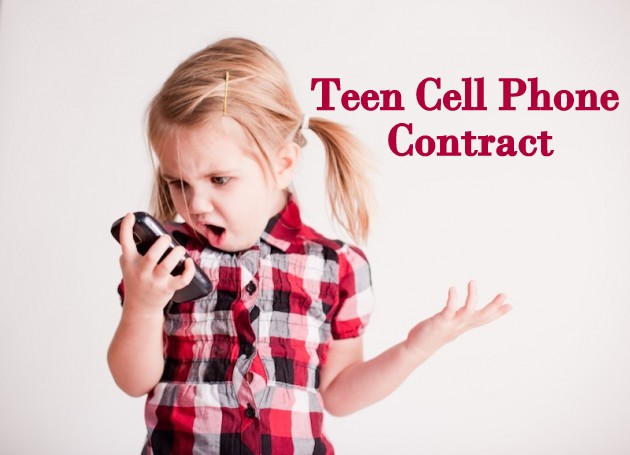A few weeks ago, I had the opportunity to facilitate a discussion at our church for parents and their high school and middle school aged kids.
The topic of discussion was teens and technology
I am by no means an expert in this field.
I don't have a smart phone
If I am forced to work on a laptop I break out in cold sweats
Our family doesn't have video games
and I just started texting about 6 months ago
I do however, have a 14 year old son who is slowly getting acclimated into this world of technology and all it has to offer. My husband and I have done our best to do as much research as we can to make the best decisions for our son {and subsequently other two kids} as they grow to be responsible users of technology, including cell phones, social media and the internet.
For most of us, it isn't news that nearly a decade ago, the American Academy of Pediatrics took a look at how much more screen time (computer, and TV) our kids were getting and put suggested limit of no more than 2 hours of screen time a day.
 source
On average, America kids are getting 9 hours of screen time a day.
source
On average, America kids are getting 9 hours of screen time a day.
Screens of some kind occupy our kids around 50 hours a week!
That's a full time job PLUS 10 hours of overtime!
Because so much of our children's day is consumed by a screen, parents really should be aware of what their children are doing.
I'm probably one of the younger parents of a teenager that I know.
When I was a teenager, some of the latest technology was a discman and a wireless phone.
I didn't get a cell phone until I was in my 20's, and when I did, I used around 10 minutes A MONTH!
Cell phones are relatively "new" technology for all of us.
Just because cell phones, texting, fancy gadgets and electronics were not part of our childhood does not negate our responsibility {and our right} as parents to advise and teach our children based on our observations.
That said, we also need to be our kids own best example.
Are you answering calls on your cell phone at dinner, or sending a quick text while you are driving? Are you surfing your smart phone when you could be having face time with real life people in front of you? Are you spending more time on the internet than you are with your family?
If we want to raise other centered children in a self centered world, then it begins with our example.
We need to model the guidelines that we want our kids to practice.
One of the best ways to help your kids understand technology is to establish clear and consistent expectations. Kids need to know what is expected of them, and if they break the rules, they need clear consequences.
The rules we have in the contract, work for our specific {pre-paid} cell phone plan, and have worked well for our family in the past 6 months.
While doing research on teenage cell phone use, it was brought to our attention that 65% of kids send texts in the middle of the night.
Many teens sleep with their cell phones under their pillow so that they are woken up by texts at night.
The other disturbing thing that I learned from this infographic below is that around 70% of teens receive texts and/or calls from people not in their contact list.
From talking to a mom whose teenage daughter was lured into the worst case scenario with a married man thousands of miles away, her "relationship" started with him by a simple text under the assumption that she knew this man {posing as a boy}.
My husband has gotten graphic sexts from a number neither of us recognizes on more than 1 occasion.
One in three 14-24 year olds have engaged in some form of sexting.
That is why rule number 8, 9, 10 and 11 are a part of
our contract
While bullying has always been an unfortunate part of childhood, the easy access to various media outlets has provided an outlet for round the clock abuse that we now refer to as cyberbullying.
Research has shown that there are no boundaries to cyberbullying. The popular girl from a stable home is just as likely to get cyberbullied as the boy from the other side of the tracks.
And now, the platform for bullying is much larger.
When a boy from my generation called a girl fat in class, those 20 kids in class heard it.
Now, if a boy calls a girl fat on her Facebook page, 500 of her friends just saw it.
According to this graph, 42% of teens with tech access have been bullied over the past year.
And that number continues to grow as more kids gain access to technology.
Most digital abuse isn't the act of a stranger. The perpetrator is typically someone they know very well.
Young people’s digital identity is an important part of their reputation and social standing, so having rumors spread about them in the digital space or mean comments posted on their wall can be devastating.
source
The most effective way {50%} to stop cyberbullying is for the kids to get an adult involved.
Social media has caught on like wild fire in the past few years.
According to the Los Angeles Times, 90% of teens 13-17 have tried some form of social media, with the majority of them hanging out on Facebook.
Facebook has now replaced porn for the top thing searched on the internet.
There are several social media sites that make me nervous when I was doing my research.
 Our hesitation to allow our teenager his own Facebook account is largely based on the fact that what you say and put on the internet is out there forever.
It's no secret that college admissions agents are googling applicants and scouring their Facebook pages, and human resources is searching social media to see what type of a person that applicant really is.
The job market is a competitive place. If something raises a red flag, it doesn't take much to move on to the next applicant in the stack.
Pictures a friend posts or comments that your acquaintance puts on your child's wall can jeopardize their future.
Social media can also intensify feelings of social isolation for your teenager.
If your child is predisposed to depression or low self esteem seeing a stream of happy pictures of their peers at parties they weren't invited to, or status updates of things they weren't included in provides an in your face look at how their life may not be measuring up to their peers.
Finally, so many of the latest electronic gadgets come standard with internet access.
While we can put every parental control on our wi fi, access to your neighbors wi fi or unfilited wi fi at Starbucks, the mall, or even at the library can easily be tempting.
Because of this, we have decided that we will do our best to limit/prohibit easy internet access for our kids.
This decision has made an impact on our kids because they are tempted by the latest and greatest ipods, ereaders and tablets and we are quick to explain that because of the wi fi access, they aren't an object that we will allow in our home.
One of the greatest temptations on the internet is pornography.
The statistic at the bottom of this infographic provides enough information for me {only 3% of boys and 17% of girls have never seen internet pornography}, to know that I need to help my kids make the best choices that they can while they are on the internet.
Our hesitation to allow our teenager his own Facebook account is largely based on the fact that what you say and put on the internet is out there forever.
It's no secret that college admissions agents are googling applicants and scouring their Facebook pages, and human resources is searching social media to see what type of a person that applicant really is.
The job market is a competitive place. If something raises a red flag, it doesn't take much to move on to the next applicant in the stack.
Pictures a friend posts or comments that your acquaintance puts on your child's wall can jeopardize their future.
Social media can also intensify feelings of social isolation for your teenager.
If your child is predisposed to depression or low self esteem seeing a stream of happy pictures of their peers at parties they weren't invited to, or status updates of things they weren't included in provides an in your face look at how their life may not be measuring up to their peers.
Finally, so many of the latest electronic gadgets come standard with internet access.
While we can put every parental control on our wi fi, access to your neighbors wi fi or unfilited wi fi at Starbucks, the mall, or even at the library can easily be tempting.
Because of this, we have decided that we will do our best to limit/prohibit easy internet access for our kids.
This decision has made an impact on our kids because they are tempted by the latest and greatest ipods, ereaders and tablets and we are quick to explain that because of the wi fi access, they aren't an object that we will allow in our home.
One of the greatest temptations on the internet is pornography.
The statistic at the bottom of this infographic provides enough information for me {only 3% of boys and 17% of girls have never seen internet pornography}, to know that I need to help my kids make the best choices that they can while they are on the internet.
 source
What are some ways that you have navigated the world of technology with your teenager?
source
What are some ways that you have navigated the world of technology with your teenager?

loading..









No comments
Post a Comment